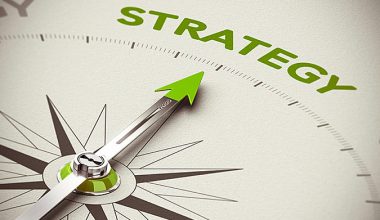The creation of demand for goods and services is one of the main problems facing modern brands. This explains why demand creation is now so well-known among B2B and B2C businesses. Demand creation does not involve manipulating consumer behavior to make them buy products they don’t need. It involves giving the appropriate information to the appropriate people at the appropriate time while being confident that what you deliver is the ideal match for your consumers’ demands. Meanwhile, in this post, we will look at the demand generation marketing campaign strategy and all that relates to it.
Join us as we get started
Demand Generation
Any marketing tactic that increases interest and awareness in your product or service is known as demand generation. The ultimate objective is to build a reliable pipeline that will expand your company. Demand-generation marketers work to do this by identifying potential customers based on behavioral data and assisting them through a nurturing process to produce high-quality, highly-qualified leads for the sales team. Demand generation includes all of your marketing and sales efforts at each stage of the customer journey, whether you’re trying to attract new clients or upsell to current ones.
The Three Pillars of Demand
Three major pillars of demand generation can easily be distinguished:
#1. Lead Generation
You must first have leads to whom you can present your approach before moving on to the next stages of demand generation. Getting the attention of potential clients and adding them to your marketable database is known as lead generation. These leads can be given to sales development to help them go through the sales funnel after being obtained through a nurture campaign.
#2. Demand Capture
You can take advantage of market demand if it exists and direct potential buyers to your goods and services. This approach incorporates a variety of lower funnel material, such as PPC commercials, SEO optimizations, and third-party intent data, that will develop your brand proposition.
#3. Pipeline Acceleration
Once you’ve been successful in creating or seizing chances based on demand, you can use pipeline acceleration strategies to accelerate the sales process. This can be as straightforward as conversing with potential clients or developing highly targeted material that addresses the needs of your leads and is pertinent to their stage in the sales funnel.
Demand Generation’s Importance
It is insufficient to have a remedy for a customer’s issue if they are not aware of it. Demand generation initiatives excel in this situation because they raise audience awareness of the needed goods. Organizations benefit significantly more from targeted tactics than from broad awareness campaigns. They pinpoint the most pertinent clients, which produces high-quality leads with a higher chance of conversion.
The Five Steps Towards Creating Demand
The hardest aspect of demand creation can be starting because it is so thorough. But first, here is a summary of the five essential elements:
#1. Goals
Where should a campaign for demand generation’s planning begin? Obviously toward the end. You can structure the remainder of your approach around your campaign’s end goals by establishing them upfront.
#2. Audience
Of course, you need to know who you’re targeting before deciding what the programs will consist of. You may focus your marketing more accurately by knowing your audience and creating customer profiles. Personas can be created depending on the responsibilities, requirements, and goals of your target audience. The more information you can provide, the better.
#3. Content
It’s time to plan and create content for each stage of the marketing funnel once your objectives and target market have been established. Pre-purchase, top-of-funnel content that promotes brand recognition, identifies a need and ignites desire should be “light” in nature.
#4. Distribution
It’s crucial to produce top-notch content. But you also need to know how to reach your audience in the most effective way. A diverse range of programs using a variety of channels, including email, social media, direct mail, and even live events, will be required to deliver content to your prospects and point them in the proper direction.
#5. Measurement
If you don’t measure everything your programs do, you can’t understand how well they work. This comprises early-, mid-, and late-stage data that cover a range of topics, including program cost, new targets, cost-per-target, opportunities your campaign has created, and the amount of money you can associate with it.
Three Ideas for Effective Demand Generation
Demand generation could be challenging. Yet there are a few things we’ve learned from experience that can assist in guaranteeing success. Here are the top three suggestions for ensuring that your campaigns are successful:
#1. Provide Fantastic Content to Your Prospects
Whether it’s an ebook, a product demo, or your weekly email newsletter, ensure the items you share with the public are worthwhile.
#2. Be Unique
Demand generation must include content marketing as a key component. And two things are necessary to execute it well: investment and creativity.
#3. Never Cease Experimenting
Understanding what your audience responds to is the secret to any successful marketing campaign, and A/B testing provides you with the necessary information. If you do it well, your campaigns will achieve higher engagement and effectiveness levels.
Demand Generation Marketing Strategy
Powerful demand-generation marketing generates new leads, boosts website traffic, and raises brand awareness. The main goal of demand generation marketing is to build and speed up a predictable pipeline for your sales team. It begins with the initial efforts designed to entice your target market to join your mailing list. Additionally, it encourages your audience to interact with your materials, go to your events, and more. Demand generation marketing cultivates and interacts with your prospects, keeping your brand in their minds.
To assist you in filling your sales funnel, we have broken down a list of the best demand-generation marketing strategy:
#1. Blogging:
Long-term awareness and affinity building are based on blog entries that are full of insightful, practical information, address the audience’s pain areas, and pique their interests. One of the most well-liked methods of content marketing is blogging, which helps you become more visible online, draw in targeted visitors, interact with your audience, and encourage them to download pertinent content, register for webinars, or take other actions to learn more.
#2. Lead Magnet:
Lead magnets are fantastic demand-generation marketing tools, particularly when used in conjunction with blogging and SEO. They will devour any high-value downloadable content in your content marketing strategy that is relevant to their demands. Original research is only one technique to attract media attention, broaden your audience, encourage online sharing, and boost website traffic.
#3. Live Events:
Industry insiders can network, pick up cutting-edge knowledge, and hear from subject matter experts at live events. Hence, by taking part in industry events or even hosting your own branded events, your business can develop vital partnerships.
#4. Account-Based Marketing:
Account-Based Marketing (ABM) campaigns combine your marketing efforts across a variety of channels and methods while concentrating on a precisely defined audience segment. Outbound operations like email marketing, LinkedIn ads, InMail, and direct mail may be a part of an ABM campaign. Also, you may direct your viewers to landing pages with tailored content or case studies.
#5. Webinars:
With webinars, establish thought leadership in your field and increase the number of opt-ins you receive. Webinar content can educate your audience about a new product or assist them in resolving typical industry problems. Interview complementary solution providers and influential figures in the sector for more effect. Everyone will be able to reach a larger audience with little to no additional work thanks to this.
#6. Podcasts:
Just because it is a medium where audiences are prepared to tune in for that period of time, podcasting is another great technique to hold their interest for longer than 30 minutes at a time.
#7. Video:
A rich, immersive medium for engaging and motivating your audience is video. It’s a potent demand-creation tool and a fantastic branding tool. Videos work well for making your audience remember your brand since people remember visual content much more readily than text-based content.
Demand Generation Campaign
A data-driven marketing tactic used by businesses to raise awareness and interest in their goods or services is called a “demand generation campaign.” It concentrates on providing discussions and material throughout the client journey. Your demand generation campaign needs to consider every touchpoint.
Examples of Demand Generation Campaigns
Now let’s look at how to use various demand generation campaigns in the actual world.
#1. Create Educational Material
The B2B community’s audiences are constantly trying to expand their expertise. Something could be done to better themselves or progress their careers. If you are knowledgeable, demonstrate it by offering free instructional downloads.
#2. Create Interactivity in your Content
Having a tool to calculate numbers is ideal if your industry caters to clients who use formulas. As a result, people will turn to your website as a resource. Think about integrating the feature into your website to keep visitors coming back. Who knows, perhaps after a few of these trips they’ll decide to become a client.
#3. Provide Free Services and Trials.
Nothing attracts attention like the term “free,” and as a result, people are eager to try anything once as long as it is free of charge. Consider letting potential clients check out your service for free. or provide a 14–30 day free trial. Then, try to persuade them to give you feedback so you can understand why they become a paying customer or not.
#4. Give Business Gifts
A potent strategy for increasing demand for your good or service is to provide presents to potential customers. It has the potential to generate an ROI of more than 200% when done well. There are many other presents that you can send, such as wine, pastries, fruit baskets, candle kits, company swag, and more. Sending presents to potential clients encourages them to contact you. So, take into account scheduling calls and meetings using this strategy.
#5. Create Commercial Opportunities
When you post content on your website, it can be difficult to attract attention. particularly if it is not widely known. You can use the audience of blogs that already have a sizable following to combat this. Locate a blog owner who is influential in your field to write a guest article for. Then it will be seen by their audience, who might then get interested in your company.
#6. Make Use of Customized Email Campaigns
Personalization isn’t just a trendy word, although you’ve probably heard it a lot lately. It’s a tried-and-true strategy B2B marketers use to get in touch with their target market. Consumers increasingly want brands to provide them with pertinent material (and even marketing messaging).
B2B Demand Generation
A marketing and advertising strategy known as B2B demand generation aims to increase demand for your product or service to propel corporate growth. Demand creation enables you to stand out in crowded markets by informing potential clients of the advantages that your company can provide. With B2B demand creation strategies, you can increase brand recognition while identifying unmet needs among potential clients.
How Can a B2B Demand Generation Be Measured?
Key performance indicators are needed to determine whether your B2B demand generation efforts are succeeding once they have been launched. The following marketing KPIs and metrics can be used to gauge the effectiveness of your campaigns:
- The proportion of completed sales
- Conversion rates at each stage of the sales process
- Per-acquisition cost
- Price per lead
- Quantity of quality leads
- Average deal value in dollars
- Customer loyalty over time
If your demand generation strategies are effective, you should observe improvements in the metrics that matter most to your company’s objectives. While other metrics on this list are probably going to go better, your cost per acquisition and cost per lead should go down.
Ideas and Techniques for Proven B2B Demand Generation
These strategies have been proven to increase lead generation, which will benefit your sales team.
#1. Enhance Your Demand Funnel Structure
You should try to create demand at each stage of the sales funnel, albeit this strategy may vary slightly depending on your company and its clients. People should be included in your marketing and advertising activities at different points throughout the pipeline, from discovery to conversion.
#2. Sync CRM and Marketing Automation
Customer relationship management (CRM) is the process through which a business gathers and arranges data on its clients, from leads to current clients. CRM software is frequently used in the sales process to keep track of all client interactions, including social media and email. Based on what they already know about the people they are speaking to, the sales team can tailor their sales presentations and follow-up meetings.
#3. Improve Lead Nurturing.
You should update your lead nurturing process if your marketing team considers a potential consumer to be finished once they have viewed your website and turned into a potential lead. Throughout the process, your marketing team should support your sales team by producing content that responds to customer inquiries.
#4. Improve Lead Scoring
Lead qualification techniques go beyond simply using website interactions to score leads. Also, take into account website statistics, email interaction, and social media involvement. See how your team qualifies interested leads through phone conversations and on-site visits by getting their feedback. Engage with your current clients to learn how they came across you and why they chose you.
#5. Use account-based marketing
With this kind of B2B marketing approach, you may tailor campaigns to the unique requirements and traits of each account. You can focus on certain messaging for a lead or group of leads using the CRM data that you have been gathering. Don’t assume that a customer who is further down the purchase funnel will respond to generic prospecting messaging. Instead, take advantage of this to engage in conversation with the potential buyer and close the deal.
#6. Construct a Content Strategy
A key element of B2B demand generation is content. When you talk about your product or service and how prospective customers may utilize it to grow their business, you’re using content. Based on the lead score, organize your material according to priority.
It is projected that more marketers with a focus on B2B tactics will report generating more leads from their social media feeds than the current 50%. You can boost your demand generation strategies by modifying your current social media strategy.
#8. Boost Your Email Marketing Activities
As part of your B2B demand creation plan, you should automate opt-in emails and follow-up emails for interested leads. Yet, you may go beyond email marketing by producing infographics, white papers, and other sorts of content to deliver to highly interested leads.
#9. Develop Credibility Via Event Marketing
You can generate leads by participating in trade exhibitions, running webinars, and organizing exclusive events for your top clients. The main goal of demand-generation campaign activities is to show that your product or service is needed.
#10. Showtime TV
Even if you might not think of TV advertisements in the B2B space, connected TV has altered the scene. You are not constrained to a linear TV schedule with a few shows and time slots that correspond with your brand thanks to the plethora of material available to you. Connected TV advertising provides the precise targeting and real-time monitoring necessary for B2B company advertising.
What Is Demand Generation vs Lead Generation?
Demand generation and lead generation differ straightforwardly. The goal of demand generation is to increase interest in or demand for your product or service through marketing initiatives. The foundation of lead generation marketing is in initiatives to gather data about prospective clients and convert them into leads.
What Are the 4 Stages of Demand Generation?
The four stages in demand generation include:
- Promoting the product and its use.
- Generating curiosity in the minds of consumers.
- Establishing your product’s market position.
- Convincing the customer to give a positive review of the product.
What Does a Demand Generation Person Do?
A demand generation manager is in charge of creating and putting into action tactics that will bring in leads and money for the business.
What Is Demand Generation in B2B?
A marketing and advertising strategy known as B2B demand generation aims to increase demand for your product or service to propel corporate growth.
Related Posts
- DEMAND GENERATION MARKETING: A Complete Guide
- TOP SOCIAL MEDIA MANAGEMENT SERVICES FOR SMALL BUSINESSES
- Beyond Cold Calling: Effective Techniques for Lead Generation
- LEAD GENERATION SERVICES: Definition, Types, and Strategies






